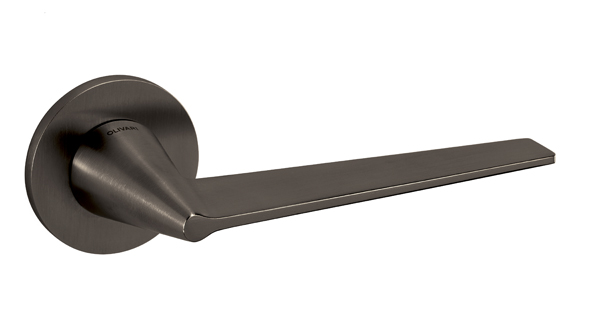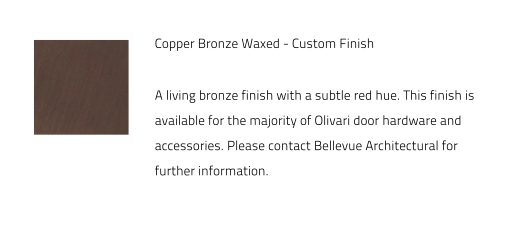Cono Round Door Handle - M265
Gio Ponti 1956
In the mid-1950s, the fruitful working relationship between Ernesto Olivari and Gio Ponti led to the creation of three models of door handles, the Lama, the Cono and the Anello. Ponti’s most famous building, the Pirelli skyscraper (1952-1961), was fitted with the Lama handles made in aluminium, analogue to other components used in the building. The Cono handle was used for his spectacular Villa Planchart (1953-1957) in Caracas, Venezuela.
- Single piece rose
- Bolt through fixings
- 5mm & 8mm projection roses
- Sold & Supported Aust & NZ wide
- 100% Solid Brass forged construction
- 100% made in Italy for over 110 years
- Torsion vs. coil spring: lifetime guarantee
- 10 / 30 Year Guarantee on Olivari finishes
- 5mm rose: European Locks & Latches
- 8mm rose: Aust & Euro Locks & Latches
Cono Round Door Handle
Gio Ponti 1956
















In the mid-1950s, the fruitful working relationship between Ernesto Olivari and Gio Ponti led to the creation of three models of door handles, the Lama, the Cono and the Anello. Ponti’s most famous building, the Pirelli skyscraper (1952-1961), was fitted with the Lama handles made in aluminium, analogue to other components used in the building. The Cono handle was used for his spectacular Villa Planchart (1953-1957) in Caracas, Venezuela.
- Single piece rose
- Bolt through fixings
- 5mm & 8mm projection roses
- Sold & Supported Aust & NZ wide
- 100% Solid Brass forged construction
- 100% made in Italy for over 110 years
- Torsion vs. coil spring: lifetime guarantee
- 10 / 30 Year Guarantee on Olivari finishes
- 5mm rose: European Locks & Latches
- 8mm rose: Aust & Euro Locks & Latches


The Cono’s profile was a sculptural reproduction of the diagram of forces involved in operating the handle, and thicknesses were reduced to a minimum. Its main characteristic is the shape of the rose around which the handle rotates: it is a continuation of the shaft. This results in an aesthetic unity that required particular skill from the cabinetmaker installing them.



The Cono handle was used for his spectacular Villa Planchart (1953-1957) in Caracas, Venezuela.




 Fire Rated
Fire Rated CR
CR  SC
SC  IB
IB  ISB
ISB  PBU
PBU  ISBRZ
ISBRZ  IA
IA  MBW
MBW  CBW
CBW  DBW
DBW  EMB
EMB  PC
PC